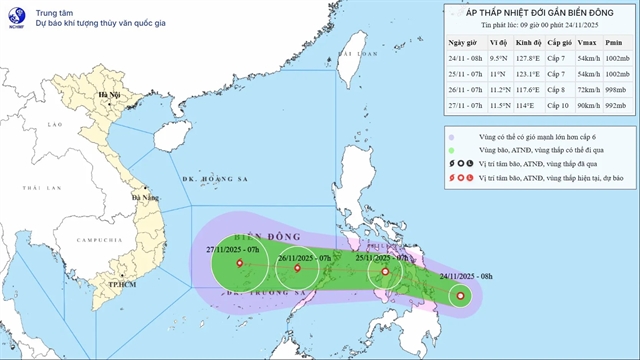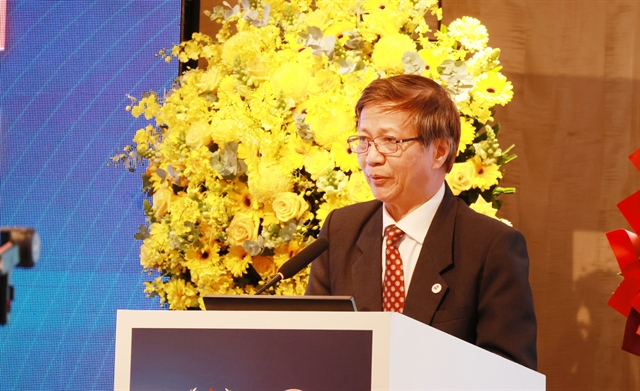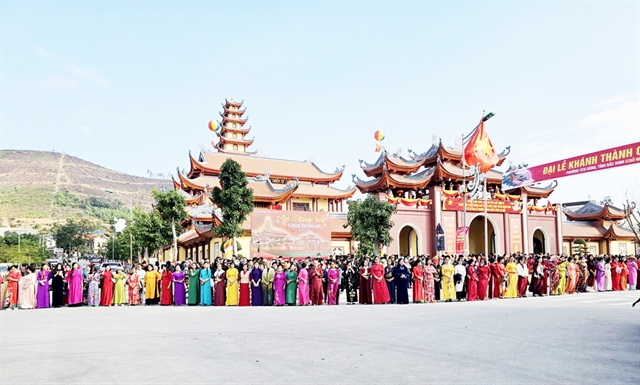 Life & Style
Life & Style

 |
| A Chhay-dăm drum dance by Khmer people. — Photo vov.vn |
HÀ NỘI — Việt Nam will have four more national intangible heritages, according to Ministry of Culture, Sports and Tourism (MoCST).
The four heritages were revealed by Minister Nguyễn Văn Hùng on Wednesday, who signed off decisions so they will be added to the existing list of distinctive traditions of the nation.
They are the folk art of Chhay-dăm drums by the Khmer people in Tri Tôn District and Tịnh Biên Town in the southern province of An Giang; the Chèo tàu Tổng Gối Festival, a traditional boat singing event in Tân Hội Commune, Hà Nội's Đan Phượng District; a forest worship ritual of the Pa Dí people in Mường Khương District, in the northern mountainous province of Lào Cai; and the traditional weaving handicraft of the Tày people in Bảo Yên District's Nghĩa Đô Commune, Lào Cai Province.
Chhay-dăm drum playing
This is actually a special and unique folk dance, accompanied by drum playing, closely associated with the Khmer. The dance is indispensable in the ethnic community's traditional celebrations such as the Chôl Chnăm Thmây, Sen Đôn Ta and Oóc-om-bóc, and can be performed anywhere such as the stage, temple yard and or even outside homes, incorporating smooth and comfortable movements.
The drum is also a special instrument as it has one side covered with leather, while its body is made from a hollowed-out old areca trunk. Each Chhay-dăm dance performance usually includes between four and six drums, two Cuối (gongs), a Chul (cymbals) and a Krap or sênh drum.
A Chhay-dăm drum dance features a series of drumming movements, sometimes dancing alone, sometimes dancing in pairs, threes, or fours, or even dancing in groups.
The movements include simple acts such as tapping on the drum's surface or more complex acts such as hitting it with the elbow, with the heel or suddenly hitting each other's drums, then dancing and performing tricks with the drum.
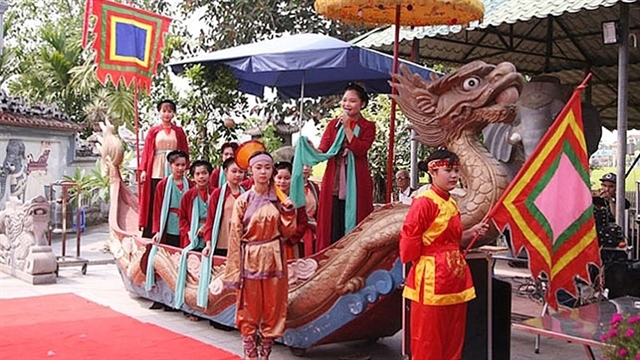 |
| A 'Chèo tàu' performance at the Chèo tàu Tổng Gối festival. — Photo vov.vn |
Chèo tàu Tổng Gối Festival
Chèo tàu is a type of traditional singing performed on a rowing boat. The Chèo tàu Tổng Gối Festival takes place every year in four villages of Thượng Hội, Thúy Hội, Vĩnh Kỳ and Phan Long on January 14 and 15 of the Lunar calendar at the Lăng Văn Sơn historical relic site and Voi Phục Temple in Tân Hội Commune, Đan Phượng District.
The highlight of the festival is the Chèo tàu performance featuring a duet of responding melodies between two wooden dragon boats, not launched into real water, but symbolically rowed on land.
The contents of the songs in the Chèo tàu performance are all aimed at honouring the Tổng Gối God Văn Dĩ Thành.
The festival aims to preserve and promote the local intangible cultural identity and the value of traditional performance, arouse national pride and serve the needs of spiritual cultural life of the locals.
It includes a series of cultural activities and entertainment such as fireworks, drums playing, dragon and lion dances, and folk games.
Forest worship ritual of Pa Dí
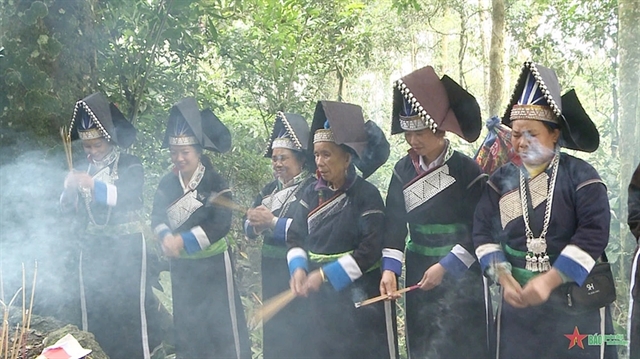 |
| Pa Dí ethnic people performs rituals at their Forest worshiping ceremony. — Photo vov.vn |
The forest ritual is a unique cultural belief of ethnic communities in Mường Khương District in general, and specifically the Pa Dí people in Sa Pa Village, of Mường Khương Town. The spiritual event is often solemnly held at the beginning of the year in the village's forbidden forest with many unique rituals and profound humanistic meanings. Villagers prepare many offerings and agricultural products made by themselves to pray for favourable weather and good crops.
During the event, Pa Dí people burn incense to invite the forest God to witness their sincerity, while at the same time praying for a new year of good health, peace, happiness and prosperity. In addition, the people also promote the forest protection by asking each other to follow the local customs.
Traditional weaving craft of Tày people
Weaving is a long-standing traditional craft of the Tày people in Nghĩa Đô Commune, Lào Cai Province's Bảo Yên District.
From natural materials including palm and rattan, with skillful hands, rich imagination and talent, the locals have created a variety of products such as baskets, trays, sticky rice containers, fishing tools and other indispensable items for both their daily life and cultural activities. Although weaving is not a profession that brings a high income, it contributes significantly to improving people's living conditions. — VNS


